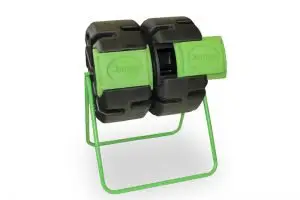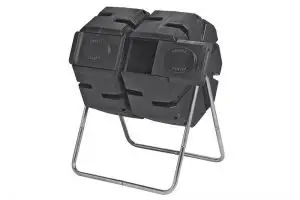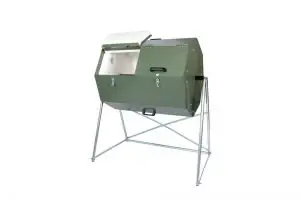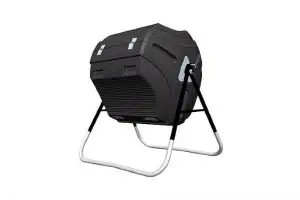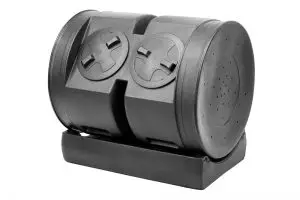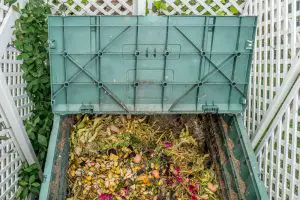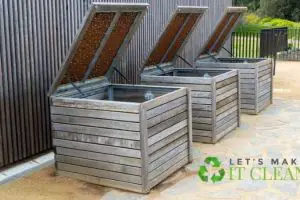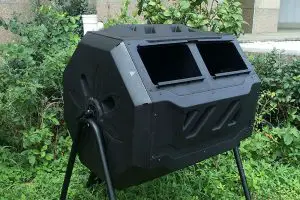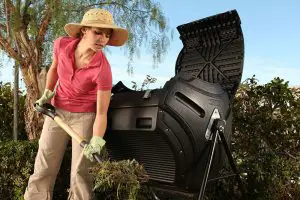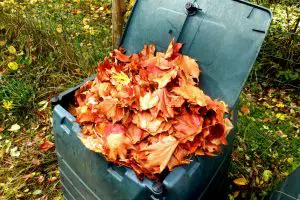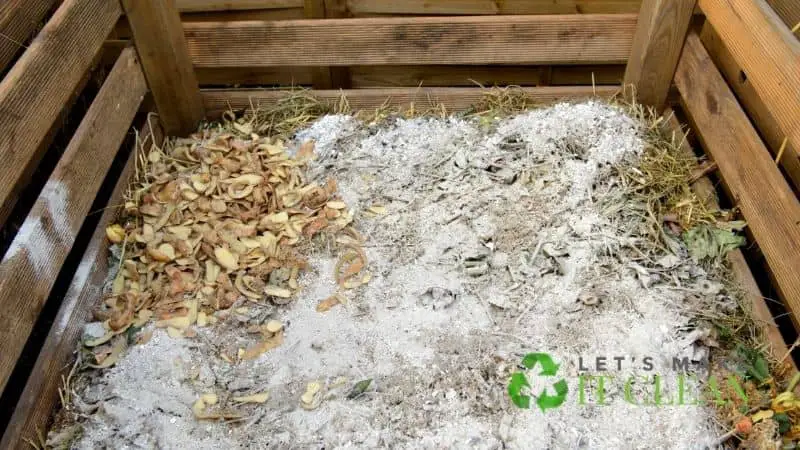When preparing a compost pile, you are likely to face various problems.
The most common problems include a compost simply failing to rot down before its ready, smelly compost bins, or fresh material ingredients that have become excessively wet.

In most cases, only a few gardeners get the whole process right every time.
Quick Navigation
One popular problem you might experience is excess moisture. If your compost pile is too wet, you risk foul odors, encouraging the production of substances harmful to your plants and also flies.
In this article, we shall comprehensively discuss how to tell if your compost is too wet and guide you on how to fix a soggy compost pile.
Let’s get right into it!
What Can You Add to Compost When Too Wet?
Fresh compost ingredients such as grass clippings and vegetable peelings have a high water concentration, making them heavy. If so many materials are added to your compost pile at once, you risk getting the heap compacted, completely excluding air or blocking air spaces with water.
The oxygen deficiency creates an ample ‘anaerobic’ environment that encourages microbes to thrive.
Remember, these microbes are responsible for producing the unpleasant smells that emerge from such a rotting environment.
Most of the fresh material ingredients are vegetables with a high nitrogen content, which makes mixing carbon-rich ingredients the ultimate solution to this problem.
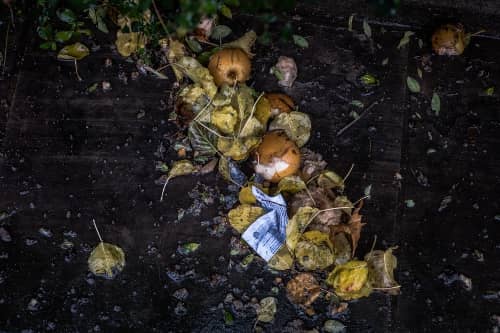
However, once you notice that your compost pile is getting too wet, all you have to do is first dig the heap out wholly. The next step includes turning the pile ingredients to expose the materials to more air before restacking the compost heap.
Once you have incorporated enough air into the compost pile, you can add some dry ingredients to the pile to balance the greens and the browns. This also helps improve drainage in the compost heap to prevent the pile from clogging up again from excess water.
Compost materials like shredded prunings, straw, sawdust, and small pieces of cardboard will create paths within the compost to allow free circulation of air and also improve drainage of excess moisture.
In case you don’t have all these dry materials, you can also opt to use scrunched-up newspaper. The newspaper allows air to percolate and also allows excess water to drain away from your compost heap.
How Wet Should Your Compost Pile Be?
So, how do you know if your compost heap is wet enough or still needs watering? According to most expert composters, your compost pile’s moisture content should range from 40 to 60 percent.
To determine whether your heap is too dry, conduct a quick hands-on visual check. A compost heap that’s too dry will fail to generate enough heat. Another essential detail to ascertain whether your heap is too dry is the minimal evidence of organic ingredients breakdown.
However, you would want to let your compost pile get too wet since this practice leads to the compost materials being slimy and smelling terrible.
There are different ways to determine the perfect moisture content for your compost heap. You can use the excellent rule-of-thumb as the sponge test whereby your compost pile should maintain the consistency and moisture level of a wrung-out sponge when squeezed.

What’s even better, there have been new technological advancements in the compost industry that have led to the emergence of compost moisture meters. However, these meters are mostly used by large-scale commercial composters.
They are not necessary nor economical for a small-scale home composter that can determine how the compost heap is fairing by merely feeling the warmth and wetness levels.
Besides, these compost meters require you to gain some unique skills to use them effectively. That’s not all.
Another underlying factor to these meters is that your compost heap may be more damper on one side than the other, making it quite challenging to use the meter. Also important to note is that these compost meters are quite expensive.
How to Fix a Soggy Compost Pile
A soggy compost is mainly because of a variety of factors ranging from too much moisture, lack of enough aeration, and an imbalance between nitrogen-rich and carbon-rich compost ingredients.
You can get composting right by converting yard and kitchen waste into compost during the fall and summer seasons when carbon-generating materials are easily accessible.
However, the new materials you add to your compost pile are mainly kitchen wastes that are rich in nitrogen and boast a high moisture content during winter.
To maintain a healthy compost, you need more carbon matter than nitrogen. However, carbon-rich compost ingredients are rarely available during winter. Suppose you don’t turn your compost regularly.
In that case, the available carbon materials, for instance, dried grass clippings, leaves can pile up together, reducing the free circulation of air and slowing the compost-making process.
The good news is that a soggy compost pile can be fixed in time for use in spring. All you have to do is take a few measures in the later winter season or the early spring season. The following are some of the suggestions commonly used to mitigate the situation:
Cover Any Open Compost Pile
A compost heap should be wet but not soggy. You should always cover your compost pile before the spring rains, that is, if you don’t live in an extremely dry climate where you might not be expecting the spring rains.
If you have your compost pile on the ground, you should provide drainage as well. You can choose to dig a shallow trench to lead a runoff away from the compost heap.
Add Fine Carbon Material Which Should Decompose Quickly
Adding compost materials rich in carbon helps absorb some of the excess moisture in the compost pile and restore the carbon-nitrogen balance required for efficient composting. Also, something important to note is that bulky carbon ingredients take longer to decompose.
You should, therefore, be careful when you use them. To fix a soggy compost pile within a short timeframe, you should go for finer carbon-rich ingredients, which will disintegrate quickly. Here are some examples:
Lawn Thatch
A lawn thatch helps you aerate your lawn while at the same time improving your compost as well. You can use a thatching or steel rake to comb through your lawn and get rid of excess thatch.
Thatch is extremely dry and fine and breaks down quickly. What’s even better, it helps absorb any excess moisture content that fluffs up the decomposing materials. This practice also encourages aeration, which is essential for the composting process.
Clean Sawdust
Rich in carbon, sawdust is a bulking agent that helps promote aeration and, hence, fixes a soggy compost pile.

Remember to be careful since composting any wood or sawdust that has been treated with a chemical preservative can have adverse effects on your compost pile. Same way, do not use sawdust or wood from chainsaws that use petroleum-based chained oil.
Also, avoid juniper, redwood, and cypress sawdust as they slow down the decomposition process. When applying the sawdust, make sure to sprinkle the sawdust in layers. Alternatively, you can also turn the compost heap while adding the sawdust not to hinder aeration.
Pine Needles, Forest Duff
The fine forest duff; the fine wood bits of brown matter on the forest surface are very rich in carbon and will encourage the free circulation of air around the compost pile.
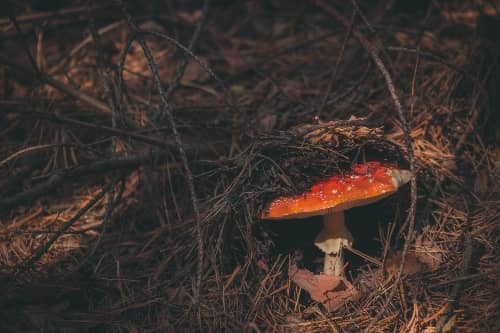
Remember to add lime when using pine needles since they are acidic. However, these compost ingredients are not as absorbent as other compost materials such as sawdust.
Peat Moss
One outstanding advantage to peat moss is that it does not affect the carbon-nitrogen concentration ratio. On the downside, however, peat moss is highly moisture absorbent, thus helping balance the moisture content of the compost.
How Do You Know if Your Compost Is Too Wet?
If you are wondering how you can determine whether your compost is too wet, all you have to look out for is stinky smells coming out of your compost heap.
Some of the factors that can lead to this condition include too much water, inadequate aeration, and an imbalance in nitrogen and carbon concentration. Without enough aeration, the compost material becomes stagnant and soggy.
Video
Conclusion
If your compost heap is too wet, you can try to add newspaper paper, brown cardboard, or seed-free chopped straw.
The main idea is to open up your compost heap’s insides to allow free circulation of air. Alternatively, you can also encourage more free air circulation by turning your compost pile.

